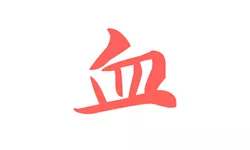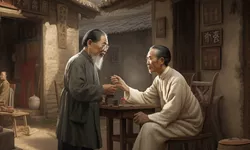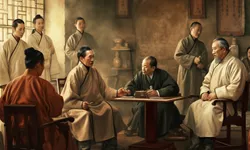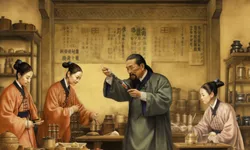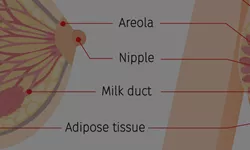Traditional Chinese Medicine (TCM) is a rich, intricate system of health and healing that has evolved over thousands of years, deeply intertwined with the history of China itself. From the earliest shamanic practices to the complex pharmacology and acupuncture methods of today, TCM has continually grown and adapted, mirroring the vast and diverse cultural shifts across China's dynasties. This article traces the key developments and achievements of TCM throughout the ages.
Zhou dynasty
The Zhou dynasty (1046 to 256 BC) saw the emergence of the premises of TCM. The Book of Rites (Zhou Li) for instance clearly records the division of labor in medicine, including physicians for illnesses, wounds, diet and animals.
Warring States
Starting in the Warring States period (475 BC to 221 BC) up until the Han dynasty (202 BC to 220 AD) was an extraordinarily rich period in terms of laying the foundational theoretical basis of TCM.
It is during that period that the system of theory, method, prescription and some of the most important medicines of TCM were developed. The so-called "Four Classics" of TCM: the Huangdi Neijing, the 81 difficult issues, the Shennong Bencao and the Treatise on Cold Damage were all written during that period.
Most of what to this day remain TCM's core theories, from the Five Elements theory to the Ying Yang theory, stem from that period. It is also during that era that TCM's basic diagnostic methods, principles of syndrome differentiation, treatment principles, theories of herbal medicine and acupuncture and theories on how to prevent diseases were developed. In particular, the Treatise on Cold Damages provides a complete explanation of how to diagnose and differentiate TCM syndromes in order to treat them.
During the Warring States period specifically one notable publication is The Formulas for Fifty-Two Diseases which includes the use of drugs and alcohol to treat wounds, mercury preparations to treat skin diseases and surgical treatment for hemorrhoids and fistulas.
Qin dynasty
The Qin dynasty (221 to 206 BC) saw several significant innovations in TCM:
- The earliest quarantine centre for leprosy in the world's medical history (as recorded in the Qin Bamboo Slips of Yunmeng)
- The earliest known format and sample of forensic examination and appraisal documents in world history (also recorded in the Qin Bamboo Slips of Yunmeng)
Han dynasty
The Han dynasty (206 BC to 220 AD) boasted several important discoveries:
- The earliest general anaesthetic in the history of world medicine (called Ma Fei San), invented by Hua Tuo, a famous TCM doctor
- The record of the triple rhythm pulse, the earliest knowledge of this pulse in history (as recorded in Moxibustion of Eleven Meridians of Foot and Arm, a text excavated from the Mawangdui tomb)
- The earliest work on obstetrics and gynaecology in China (as recorded in The Book of Fetus and Childbirth, a text excavated from the Mawangdui tomb)
- The world's earliest medical care gymnastics (as recorded on silk paintings recovered from the Mawangdui tomb)
- The earliest record of the use of needle puncture to release ascites (as recorded in Nei Jing Ling Shu Shi Shi Qi)
Jin dynasty
Starting in the Jin Dynasty (266 to 420 AD) up until the Tang dynasty (618 to 907 AD), TCM saw the rise of clinical specialties and a significant increase of practical clinical literature. Many comprehensive formula books were published during that period, including more detailed discussions on the principles of diagnosis and treatment as well as the use of herbal medicine in the treatment of specific diseases and patterns.
The Jin dynasty also boasted several important discoveries:
- The use of brain plasma of rabid dogs against rabies, a forerunner of the immunisation method (vaccines)
- The first recorded use of Qinghao (Artemisia Annua) for the treatment of malaria (as recorded in Ge Hong's book Handbook of Prescriptions for Emergency) which in the 20th century would become the leading treatment for malaria and earn Chinese TCM doctor Tu Youyou a Nobel prize in medicine.
Northern and Southern dynasties
One notable discovery during the Northern and Southern dynasties (420 to 589 AD) is the Wuying Pill for the treatment of goitre with deer thyroid, as recorded in The Monk's Deep Collection.
Liang dynasty
A noteworthy discovery during the Liang dynasty (502 to 557 AD) was the world's earliest dental care formula: the "Medicated Tooth Powder formula" recorded in The Classical Garden.
Sui dynasty
During the Sui dynasty (581 to 618 AD), in The Treatise on the Origin of Diseases, were several important world firsts:
- The record of intestinal anastomosis
- The record of lacquer allergy
- The identification of smallpox and measles
- The ligation of blood vessels to stop bleeding
Tang dynasty
The Tang dynasty (618 to 907 AD) had numerous advances in the history of TCM and world medicine:
- The method of urine testing for diagnosing diabetes and jaundice (Arcane Essentials from the Imperial Library, Waitai Miyao)
- The treatment of cataracts with golden needles (Arcane Essentials from the Imperial Library, Waitai Miyao)
- The production of prosthetic eyes made of beads
- The creation of the Imperial Medical Bureau, the first national medical school in the world
- The publishing of Newly Revised Materia Medica, the world's first national pharmacopoeia
Song to Yuan dynasties
During the Song dynasty (960 to 1279 AD) and Yuan dynasty (1271 to 1368 AD) the writing of books tended to be in specialized areas, diseases and topics. This period also saw the rise of significant controversies within TCM and various doctrines from different schools of thought.
The Song dynasty specifically saw an impressive number of important discoveries and advances in the history of medicine:
- The world's earliest pharmacy bureau was established to manage medical affairs
- The Bureau for the Compilation of Rectification of Medical Books was created: the world's earliest national organization dedicated to the compilation and correction of medical texts (an early ancestor to the WHO)
- The world's earliest medical teaching model: the Acupuncture Bronze Man
- The extraction of "autumn stone" from human urine and rabbit brains to produce medicine to induce birth
- The publishing of Records of Vindication: the world's earliest and most systematic book on forensic medicine
Yuan dynasty
Two significant discoveries during the Yuan dynasty (1271 to 1368 AD) were the invention of the hanging reduction method for spinal fractures and the curved needle for surgical suturing.
Ming to Qing dynasties
During the Ming (1368 to 1644 AD) and Qing (1644 to 1912 AD) dynasties there was a clear trend towards innovation in TCM, with the introduction in China of modern scientific ideas, particularly in the field of infectious diseases. Several fields of TCM were deeply affected by these new ideas, such as pharmacology and anatomical physiology.
Some very important books were published such as The Grand Compendium of Materia Medica, Supplement to The Grand Compendium of Materia Medica, Illustrated Reference of Botanical Nomenclature and Correction of Errors in Medical Works with the "Doctrine of Warm Diseases".
There were significant discoveries during the Ming dynasty, such as:
- Human pox inoculation: the world's first inoculation against smallpox
- The artificial extraction of aconitine: the first recorded extraction of alkaloids in the world (as recorded in The White Monkey Sutra)
Opium War to the founding of the PRC
The period starting in the Opium Wars (1839 to 1860 AD) to the founding of the PRC (1949 AD) was characterized by trying to understand and handle the relationship between TCM and Western medicine, with the emergence of a school of thought (the Zhong Xi Hui Tong school) that tried to converge both types of medicines and encourage scientific modernization in TCM.
The Enduring Legacy: TCM's Pioneering Contributions to Global Medicine
TCM has left an indelible mark on the annals of medical history. From the Warring States period to the Qing dynasty, each era bore witness to profound discoveries and advancements that not only shaped TCM but also influenced global medicine significantly.
The discovery of Artemisinin from the Qinghao plant during the Jin dynasty, for instance, paved the way to revolutionize malaria treatment worldwide, saving countless lives. Similarly, the introduction of inoculation during the Ming dynasty, centuries before Edward Jenner's vaccine, laid the groundwork for our modern understanding of immunization.
The enduring wisdom of TCM, encapsulated in comprehensive medical texts like Huangdi Neijing, Shanghan Lun, or the works of Sun Simiao, continues to enrich our contemporary practices. These seminal works introduced concepts such as the systematic classification of medicinal herbs, standardized acupuncture techniques, and the ethical practice of medicine, principles that remain integral to healthcare today.
As we continue to explore and understand the depths of TCM, we also acknowledge the ingenuity and wisdom of the practitioners of the past. Their relentless pursuit of knowledge, their observations, and their innovations have left us with a legacy that transcends time and continues to contribute to the health and wellbeing of humanity.
The history of TCM is a testament to the enduring power of observation, innovation, and holistic understanding. As we continue to face new health challenges in our modern world, the lessons from TCM's rich history remain ever relevant. It reminds us of the potential of traditional knowledge, the power of nature, and the timeless principles of holistic care. As we move forward, we carry with us the knowledge of the past, applying it to the present, and advancing it for the future of medicine.

